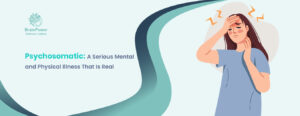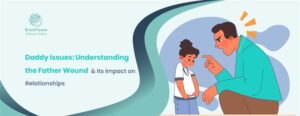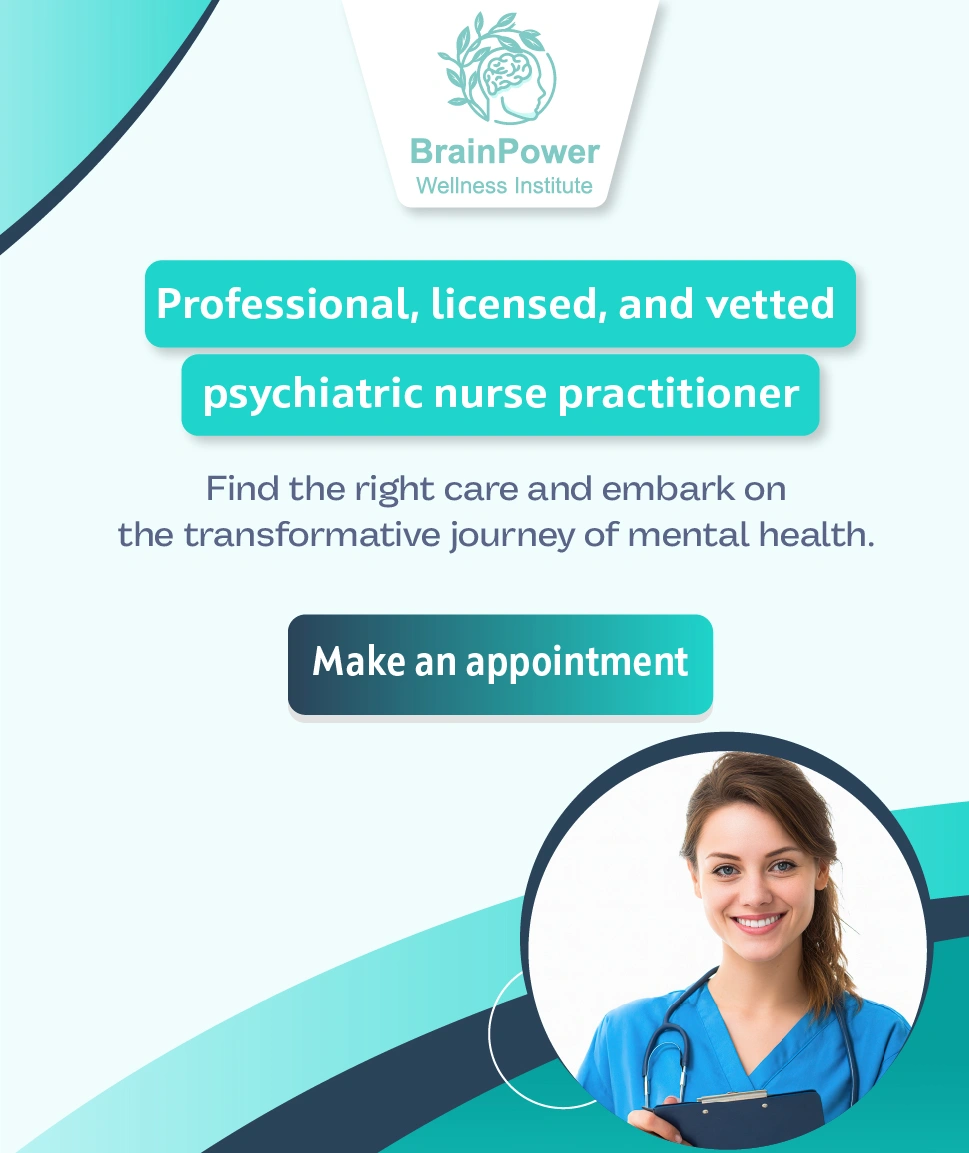In the past, an agitated, restless, inattentive child with difficulties relating to peers, parents, and teachers was commonly labeled as “rebellious” and “disinterested” and was the target of criticism and punishment from family members and caregivers. As time passed, information about child development became better known, making families understand that this behavior could signal a neurodevelopmental disorder. One of the most common is Attention Deficit Hyperactivity Disorder (ADHD).
ADHD in babies is the most common behavioral disorder, affecting around 5% of children. Of these, 95% present symptoms of the condition before the age of 12 — in general, teachers who observe differences in behavior indicate the condition.
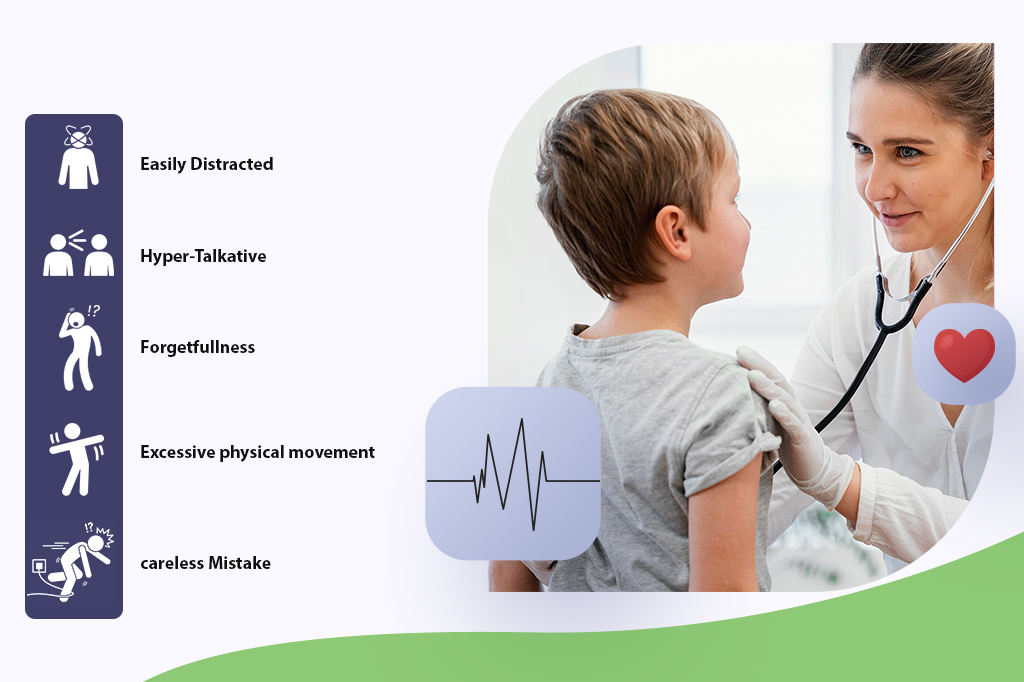
Symptoms of ADHD In Toddlers
There are three categories of signs of ADHD in toddlers: hyperactivity, impulsivity, and inattention, and a child with ADHD may present one or more of these. In most cases, the child has difficulty controlling their emotions, their behavior and even anticipating the consequences of these behaviors.
Read More: ADHD Female Symptoms, Diagnosis & Treatment
Hyperactivity
Hyperactive behavior can be considered when the child constantly needs to talk and move. Difficulty remaining seated, even when necessary, or playing in silence and the continuous search for “something to do” are also signs of ADHD in babies that are hyperactive.
Impulsiveness
Most of the time, we can identify impulsive behavior with hyperactivity in the youngest child, such as difficulty waiting, a tendency to answer questions quickly without thinking, disruptive behavior, or interruptions.
Inattention
Inattention can be identified in several ways. Among them, we can highlight the ease of forgetting or losing things, being very distracted and disorganized, showing low performance at school, as well as poor concentration.
It may be easier to identify these problems from the moment the child starts attending school, as from then on, there will be a greater need to pay attention and sit for longer.
Types of ADHD In Babies
Depending on the level of symptoms, the disorder will fall into one of the three types into which it is classified. Are they:
- Combined type ADHD toddler: when the criteria of inattention, hyperactivity, and impulsivity are observed.
- Predominant inattentive ADHD: when the inattention criterion is observed, but the hyperactivity and impulsivity criterion is not predominant.
- Predominant hyperactive-impulsive ADHD: when the criterion of hyperactivity and impulsivity is predominant instead of inattention.
Are Children Born With ADHD?
The answer to this question is yes; the child is born with this attention deficit hyperactivity disorder.
However, it is only noticeable at the beginning of the school phase, for the simple fact that the family is unable to identify these symptoms straight away because they think that the child has accepted this difficulty over time or because they are taken away because they are not paying enough attention and so on.
However, the symptoms appear more clearly when using skills common to any child is necessary. But the question is, what are the causes of ADHD in children?
ADHD in babies is a neurodevelopmental disorder, so it is not a disease but a condition that is part of neurodiversity. Attention Deficit Hyperactivity Disorder is a disorder having extreme inattention, disorganization, impulsive behavior, and restlessness, among others. Symptoms generally appear before the age of seven. In fact, according to estimation, 5% of adults have ADHD.
Hyperactivity in Babies and Brain Maturation
Since ADHD is a disorder with an organic basis – genetic (inherited from parents) or congenital (resulting from a problem during pregnancy or birth), it should, therefore, be present from birth. However, if this is so, why can’t the diagnosis be made before age 5 or 6?
This is an extremely common question for mothers and fathers. Countless cases seek help, asking for a diagnosis for their child aged… six months, one and a half, three years. You can understand why mothers and fathers mobilize themselves in search of a specialist. However, it will be some time before they can be sure, at least when it comes to ADHD in kids.
This is because, at birth, a child’s brain is not yet “ready” – they need to grow and mature to become capable of speaking, walking, thinking, and controlling themselves. This process depends on two essential factors: learning and neurological maturation, which result in organic changes in the brain.
Among the biological processes in the brain, one of the most important is “myelination.” Nerve fibers are progressively covered by layers of fat, which enhances communication between neurons.
It Takes Time for The Brain to Mature
Some areas of the brain mature earlier, others later. For example, the area of motor regulation matures around 10-12 years. Impulse control, emotional balance, and decision-making only after age 20.
This explains why the most intense symptoms of hyperactivity in babies and young children tend to disappear around the age of 10-12. It also explains why, at 21, a person would supposedly reach the “age of reason.”
However, it is also for this reason that one cannot be so certain about the diagnosis of childhood hyperactivity. At least as far as the diagnostic label of ADHD is concerned. As agitation is closely related to brain maturation, there are cases in which the simple passing of years solves the problem.
In this sense, a specialist can provide safe guidance regarding the need for treatment. A good idea is to try palliative solutions, which help to minimize the disturbing nature of excessive agitation until brain development advances.
Young Children Are Different from Older Children
Based on brain maturation, there is no way to expect children to have the same capabilities as older children. When there are hyperactivity, agitation, or inattention complaints in young children or even babies, any comparison must be made with children of a similar age.
To illustrate, it is normal for young children not to be able to pay attention to something for a long time. This is especially important to mention and reiterate, as many early childhood education schools require a complete “curriculum,” including starting literacy before age 5.
20 or 30 years ago, children started “pre-primary” at age six and spent the entire year just developing psychomotor skills, fine motor coordination, and pencil handling. Only at 7 did they begin to know the letters and form syllables. At this point, most of them had already matured enough to become literate without any significant difficulties.
Even Children of The Same Age Can Be Different
So far, it was easy to understand. Understand children within what is compatible with their age. Do not compare young children with older ones. Accept that everything comes at the right time.
But what happens when the child is different from others of the same age? This is the main point, which is the basis for diagnosing a specific disorder.
For example, think about the adults you know. They are pretty similar in capabilities, regardless of how old they are. For example, they all talk, walk, and write (yes, most).
Now think about a group of children of the same age. Despite the same age, the differences between them can be noticeable here. Perhaps you have already observed this. Some children are more advanced than others of the same age, for example, speaking or walking much earlier. Another child may have a delay in maturation without this being a problem. The younger the child, the greater the tolerance range of what is acceptable for their age.
Precisely for this reason, if in doubt, follow these steps:
- Look at children of similar ages.
- Check whether there are external factors from the child’s environment that may be causing any disturbance.
- If you still have questions, consult a specialist.
What Are the Main Impacts And Losses In The Life Of A Child With ADHD?
- Difficulty socializing
- Low self-esteem
- Academic and social commitment.
- More frequent accidents due to impulsiveness, lack of awareness of danger, or inattention.
- Difficulty developing and maintaining interpersonal relationships.
- Increased risk of chemical or alcohol abuse while growing up.
Does ADHD Affect My Child’s Sleep?
Yes! ADHD can affect a child’s sleep in several ways. If your little one has the disorder, he may have difficulty falling asleep or staying asleep during the night.
Furthermore, he may have poor quality sleep, a window of sleep in which he wakes up more frequently and has less deep sleep.
One of the biggest villains in your child’s sleep window, when we talk about ADHD, is hyperactivity, as this behavior can make it even more difficult for the little one to relax and fall asleep.
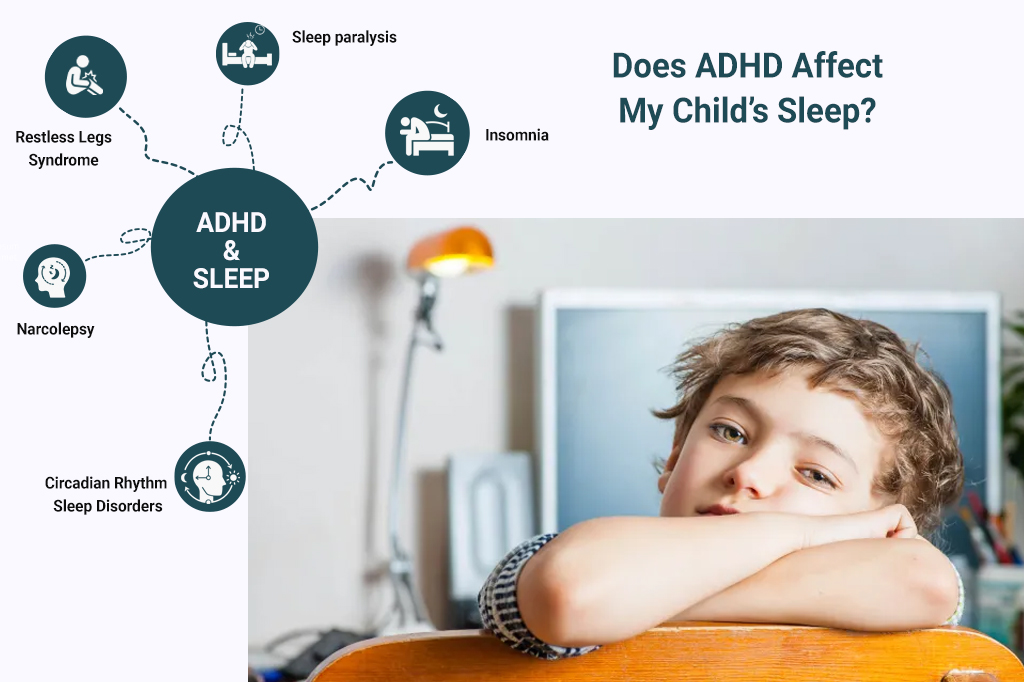
When Can Parents Become Suspicious? Is There A Minimum Age?
From preschool age (between 4 and 5 years old), although between 6 and 7 years old, during the literacy phase, ADHD symptoms may become more evident. Remembering that, to be ADHD in babies, the symptoms must:
- Cause harm to the child’s life;
- Last for at least six months;
- Repeat in at least two different environments.
Risks and Alert States
Parents and caregivers will always need to control many environmental factors at all stages of the development of a child with ADHD and thus avoid accidents. For example, it will be essential to place security screens on windows, turn off the TV while studying, and pay attention to wet floors to avoid falls, among other things.
Another characteristic of children with ADHD is impulsivity: children with ADHD tend to be less aware of danger, which can lead to a series of accidents; they may fall more often and have more collisions. Distraction also creates a greater risk of being run over. And this will accompany them throughout their lives. As adults, they are more susceptible to car accidents due to not seeing the traffic lights because they are listening to their favorite music, among other examples.
Read More: OCD Symptoms Checklist: Causes and Treatment
The Diagnosis
Some criteria must be considered to resolve your suspicions that your child may be hyperactive. The first is that the symptoms must recur with a specific frequency and not just once in a while.
Many children have difficulty at school. Some find a subject more difficult than others and need private tutoring to get the same grades as their classmates. Parents should be concerned when this difficulty affects several (or all) subjects in a generalized way.
ADHD in babies can range from mild to severe, so it is up to parents to be aware of the intensity of symptoms and report their observations to a professional.
Because the diagnosis may be confused with the child’s typical behaviors, behavioral analysis may take time. This caution is necessary to make the diagnosis correctly.
There is also a difference in the manifestation of symptoms in boys and girls. It is usually easier to diagnose boys due to their hyperactivity in the first years of life.
Girls suffer more from attention deficit. It is easier to notice ADHD in them when they start school, as they begin to show signs that they do not understand the content in the same way as their classmates.
Essential Attitudes to Help A Child With ADHD
Control the Environment
Minimize factors that may interfere with the activity the child is performing, such as, for example, turning off the TV or eliminating any other source of distraction while the child performs the task.
Welcoming and Inclusive Family, School, And Social Environment
It is essential to have a close and transparent relationship with school professionals to integrate the perception and treatment of symptoms.
Therapeutic Support
Reinforce the importance of providing conditions for the child to develop the ability to improve their executive functions (self-control, planning, organization).
Take an Individual Look at The Child
Understand what the primary ADHD in babies issue is that affects them at that moment. Your child maybe suffering from anxiety or depression.
Diagnosis is not destiny; it does not stamp and should not label the child or the future adult! We all have strengths and weaknesses, with or without a diagnosis. We all have limitations, even those who don’t have ADHD. The child diagnosed and with therapeutic support can be whatever they dream of; in time and with individual effort, they will learn to manage in their own time.
Conclusion
Psychotherapy is also essential for treating ADHD in babies. The cognitive-behavioral approach proved to have the best results. It focuses on behavioral changes by inserting healthier habits into the patient’s daily life. The child, then, has greater possibilities of facing the difficulties caused by the disorder.
Again, the presence of parents is essential. It is their role to support the child throughout the treatment, including when the child puts the teachings of therapy into practice and faces challenges. In this scenario, Brainpower Wellness Institute is the place that can help you get the best treatment for your toddler. Remember, there is no shame in getting help from child and adolescent psychiatry.

